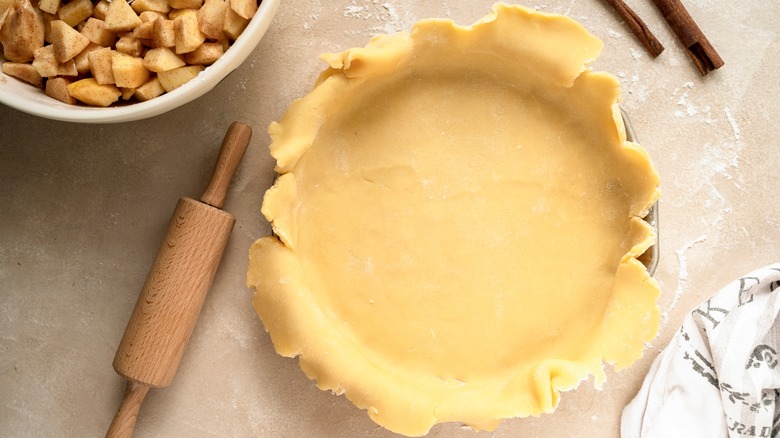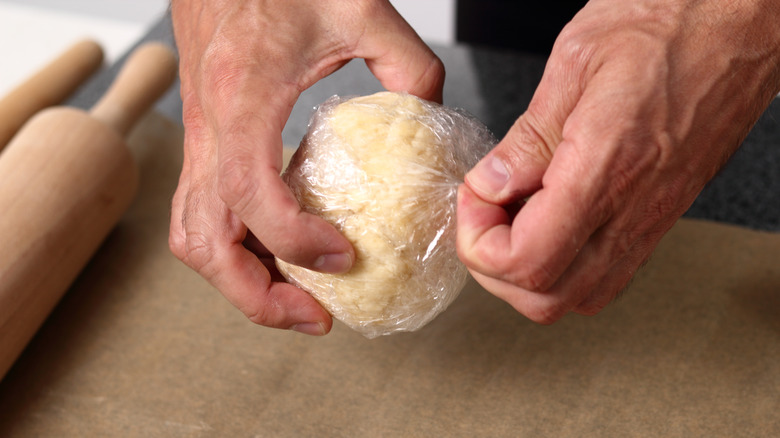Why It's Important To Double-Chill Pie Dough
As the seasons change and seasonal foods roll through their usual rotation, one thing remains consistent: dessert. A good pie is a great way to celebrate the beginning of spring, gorge yourself on summer fruits, get your pumpkin fix during the fall, and warm your bones during the winter. Seriously, how delicious does a golden-crusted, fruit-packed pie sound? This dessert is a pretty perfect way to satisfy your sweet tooth whether you're craving pecan or lemon meringue, and nothing beats a pie when it's homemade.
Let's face it, the store-bought crusts you buy straight from the freezer section of the supermarkets are thought of as cardboard and are never as buttery or flaky as advertised. Sometimes the only way to do something right is to do it yourself, and pie crust is definitely one of them. There is a key to making the perfect pie crust and it all comes down to temperature.
Use your freezer!
At the end of the day, you must remember that pie crust is a pastry. Of course, it is much thinner than other butter-based pastries like puff pastry and croissants, but it relies on fat. For a successful pie crust, it is imperative that the butter you incorporate into the dough is cold. Bon Appetit says that this is because the cold pockets of butter pressed into the flour — but not fully incorporated — will melt during the baking process and produce distinct and fluffy layers in the crust, which is what gives it the desirable flakiness.
Southern Living recommends letting the dough chill not once, but twice to ensure that the butter does not combine with the flour until it's in the oven. First, your butter must be cold before mixing into your flour, then after incorporating it in, you should chill your pie dough until it's time to roll out into your baking pan. Once you've shaped your pie crust, stick it back into the refrigerator for its second chill before baking. This will prevent the butter from warming on the counter and activating the flour, which would result in a tough crust.

